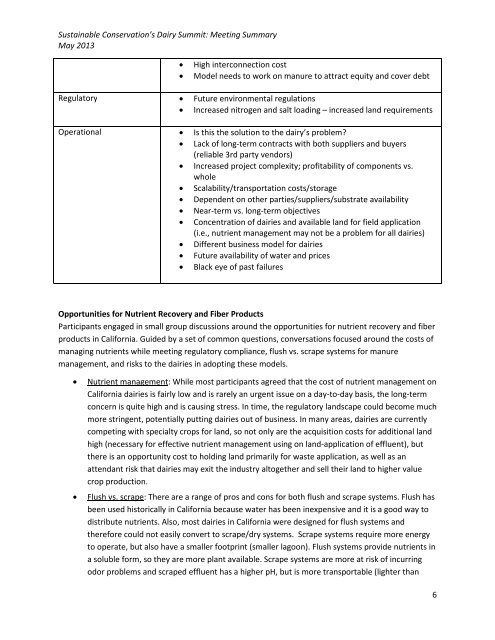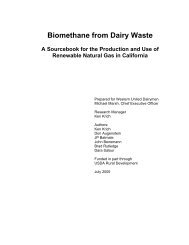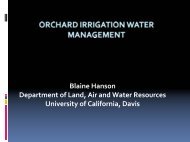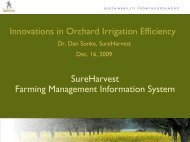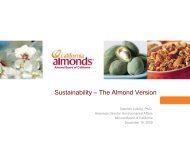Dairy Summit Summary - Sustainable Conservation
Dairy Summit Summary - Sustainable Conservation
Dairy Summit Summary - Sustainable Conservation
You also want an ePaper? Increase the reach of your titles
YUMPU automatically turns print PDFs into web optimized ePapers that Google loves.
<strong>Sustainable</strong> <strong>Conservation</strong>’s <strong>Dairy</strong> <strong>Summit</strong>: Meeting <strong>Summary</strong><br />
May 2013<br />
• High interconnection cost<br />
• Model needs to work on manure to attract equity and cover debt<br />
Regulatory • Future environmental regulations<br />
• Increased nitrogen and salt loading – increased land requirements<br />
Operational • Is this the solution to the dairy’s problem?<br />
• Lack of long-term contracts with both suppliers and buyers<br />
(reliable 3rd party vendors)<br />
• Increased project complexity; profitability of components vs.<br />
whole<br />
• Scalability/transportation costs/storage<br />
• Dependent on other parties/suppliers/substrate availability<br />
• Near-term vs. long-term objectives<br />
• Concentration of dairies and available land for field application<br />
(i.e., nutrient management may not be a problem for all dairies)<br />
• Different business model for dairies<br />
• Future availability of water and prices<br />
• Black eye of past failures<br />
Opportunities for Nutrient Recovery and Fiber Products<br />
Participants engaged in small group discussions around the opportunities for nutrient recovery and fiber<br />
products in California. Guided by a set of common questions, conversations focused around the costs of<br />
managing nutrients while meeting regulatory compliance, flush vs. scrape systems for manure<br />
management, and risks to the dairies in adopting these models.<br />
• Nutrient management: While most participants agreed that the cost of nutrient management on<br />
California dairies is fairly low and is rarely an urgent issue on a day-to-day basis, the long-term<br />
concern is quite high and is causing stress. In time, the regulatory landscape could become much<br />
more stringent, potentially putting dairies out of business. In many areas, dairies are currently<br />
competing with specialty crops for land, so not only are the acquisition costs for additional land<br />
high (necessary for effective nutrient management using on land-application of effluent), but<br />
there is an opportunity cost to holding land primarily for waste application, as well as an<br />
attendant risk that dairies may exit the industry altogether and sell their land to higher value<br />
crop production.<br />
• Flush vs. scrape: There are a range of pros and cons for both flush and scrape systems. Flush has<br />
been used historically in California because water has been inexpensive and it is a good way to<br />
distribute nutrients. Also, most dairies in California were designed for flush systems and<br />
therefore could not easily convert to scrape/dry systems. Scrape systems require more energy<br />
to operate, but also have a smaller footprint (smaller lagoon). Flush systems provide nutrients in<br />
a soluble form, so they are more plant available. Scrape systems are more at risk of incurring<br />
odor problems and scraped effluent has a higher pH, but is more transportable (lighter than<br />
6


